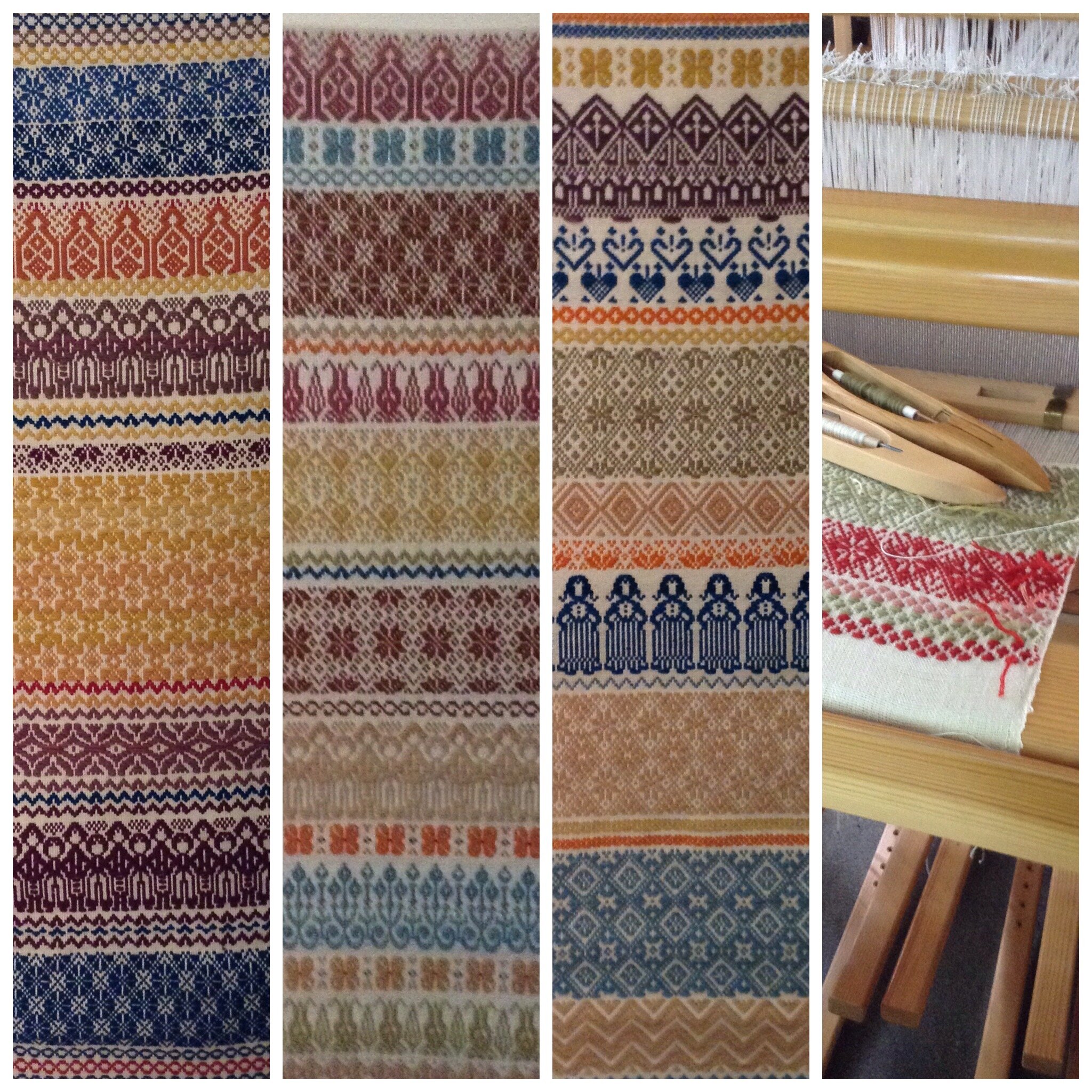A Wearable Pattern Catalog

100 Patterns on a 4 shaft Straight Draw
Some years ago, my local weavers guild, the Handweavers of Bucks County, acquired a copy of an early 20th century weaving book, 2000 Grund Phantasiebindungen für Schaftgewebe, by Carl Hintschich. It contains 2000 weaving patterns originally intended,most probably, for industrial dobby looms with 4 to 20 shafts.
All 2000 patterns are in the same format: 24 by 24 grids arranged 12 to a page. In most of these old weaving books, unless there is an explicit indication otherwise, you are expected to assume a straight draw threading. The page title is the only clue you get to the number of shafts. From there you have to inspect each grid row by row to discover where the lifting sequence begins to repeat. In the copy of the book owned by the guild, some poor apprentice seems to have been assigned the task of figuring this out. Under each grid, someone has lightly pencilled in the unit size of the repeat, as 4 x 6, or 4 x 10, etc. Often it is too faint to read and, in at least one case, he or she seems to have given up, writing only ‘4 x ?’. But in the cases where it is legible, it was a handy check against my own calculation.
This was the first page:
It took a while but I finally finished ‘translating’ all 100 of the 4 shaft patterns into a format more readily readable so that I could weave them all up.
When I was ready to wind that first warp, I gathered an eclectic assortment of lights and darks, heavy and fine, silks, wools, cottons and blends. I like to mix fibers, colors, and textures in my warps, even though it usually means that the beaming process is a bit of a challenge. But the irregular stripes served two functions in this project. First I could tell which side of the cloth was ‘up’ when woven, and second, I could see the effect of a particular set of colors with each interlacement.
Once the loom was set up it was just a matter of choosing a weft and starting with draft number one and proceeding one after the other. I wove two scarves, each about two yards long.
For my first scarf on this warp, I wove the first fifty patterns, in order, with three or four rows of plain weave between each section.
For the second fifty, I improved on the first by using a lovely orangey red thread for the plain weave separators. That not only added a little zing, but makes it easier to count up the edge of the scarf to ‘look up’ the number of the corresponding draft.
When I finished, I realized that without consciously intending it, what I had in my hands is essentially a ‘wearable pattern catalog’. As long as I could remember which end I started with, I could simply count the different horizontal bands to figure out which of the 100 lift plans I used for a particular horizontal stripe.
This is one of those points in the process where I had to remind myself that my memory isn’t reliable enough to remember which end of the rectangle was the beginning.
Casting around for a way to mark my starting point, I happened upon a little container of tiny ‘bulb’ safety pins next to a plastic box with a variety of small beads. So I added a few beads to a couple of the pins and pinned them to the relevant corner. So, since that was fun, I added beads to the rest of the pins and saved them in a little container that will fit in a pocket of my purse.
Now, instead of peering at my phone every time I land in some waiting room, I just fondle my scarf and search for an area that might represent a good starting point for my next weaving. When I see something I want to remember, I stick a little beaded pin in the spot. The warp stripe color and the position of the weft band act as a pair of coordinates so that I can find the relevant lift plans for my next weaving. (This post was originally published in May of 2019.)







